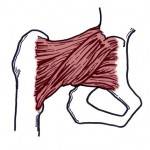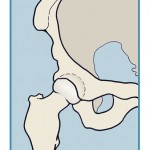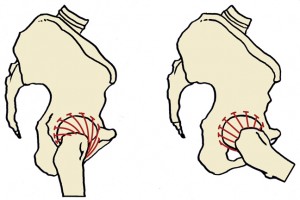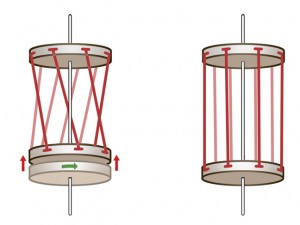The iliofemoral ligament essentially ties the femur bone into the pelvis and is considered to be the strongest ligament in the whole body.
Our bones hold us up and our muscles move us. Ligaments hold the bones together. For the bones to hold us up they generally stack one on top of the other transferring weight up and down through the skeleton.
But weight doesn’t transfer straight down from the spine to the legs—it passes through a buttress type of arch support. The angled connection of the leg into the pelvis is one particular place where a very strong ligament helps in the transition from the lower to the upper body.
One key to allowing the bones to hold us up is getting the thigh bones to move under the hips. The femur, the big bone of the upper leg, needs to be directly under the pelvis, or plumb to the floor, for that to happen.
Again, ligaments connect bones to bones. The iliofemeral ligament, located deep in the groins, essentially ties the femur bone into the pelvis and is considered to be the strongest ligament in the whole body. The iliofemoral ligament works in a very cool way- it is twisted when the pelvis is in a neutral position and it straightens as the leg flexes and extends. Ideally it is twisted solidly into the hip socket wrapping from the leg bone to the pelvis.
So much of what I do both in walking and yoga is working to figure out the disparate relationship of the upper and lower body. The iliofemoral ligament is a main link between the two. Ligaments aren’t meant to stretch but they can. If enough pressure is exerted on a ligament it can become overstretched or tear from poor mechanics or a blunt force injury like a torn acl in football. But ligaments can also become overstretched from poor posture.
Most people tuck their pelvis under and lean backwards when walking and standing. If you fall into this category it is likely that your posture is stretching the iliofemoral ligament in a powerful yet negative way.
Habitual patterns take on a life of their own and over stretched ligaments is one issue that makes changing our posture difficult. You have to realign the bones and wait patiently for the ligaments to return to their original shape and tone. This is easier said than done but it is a key step on the journey to a healthy body.
***




